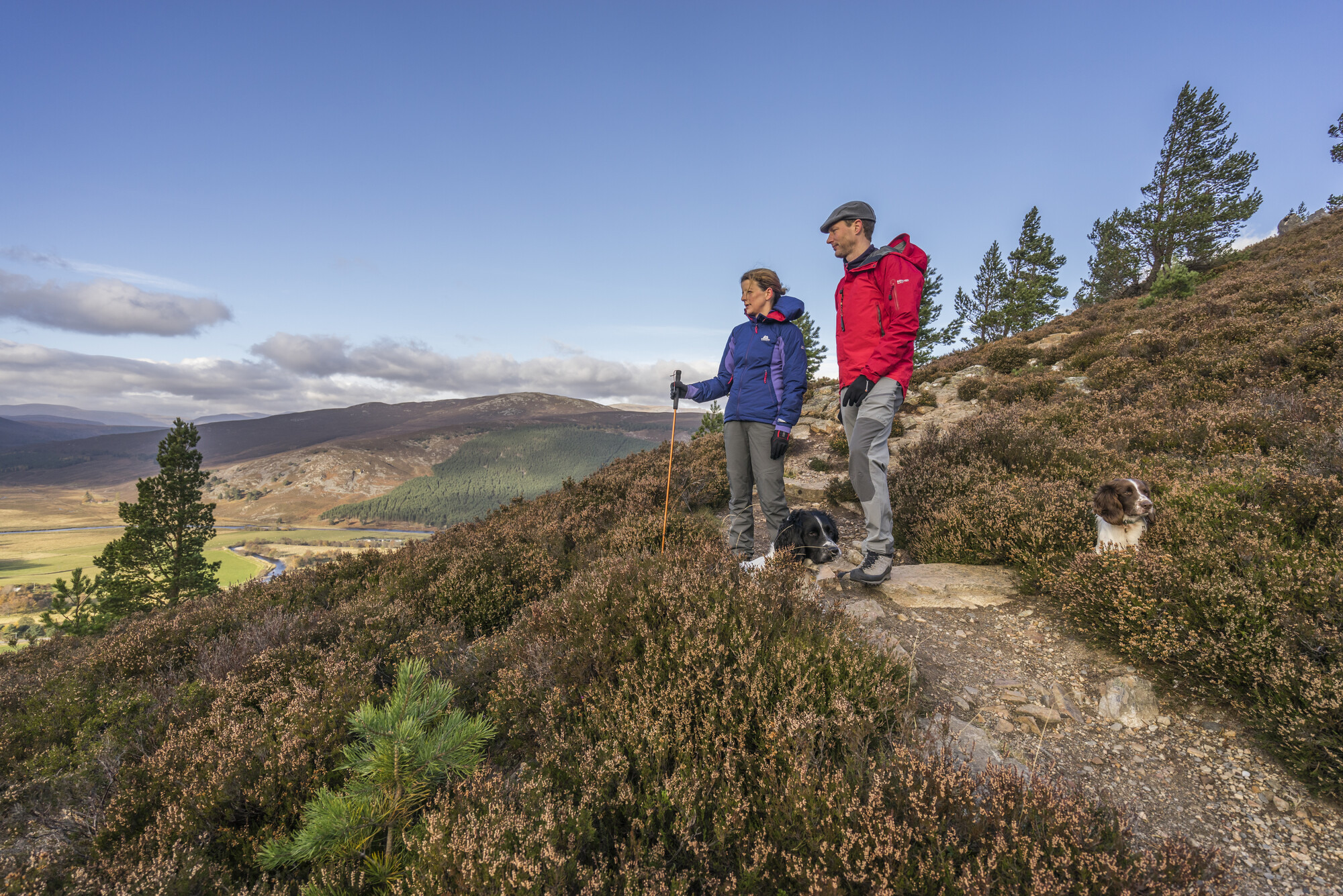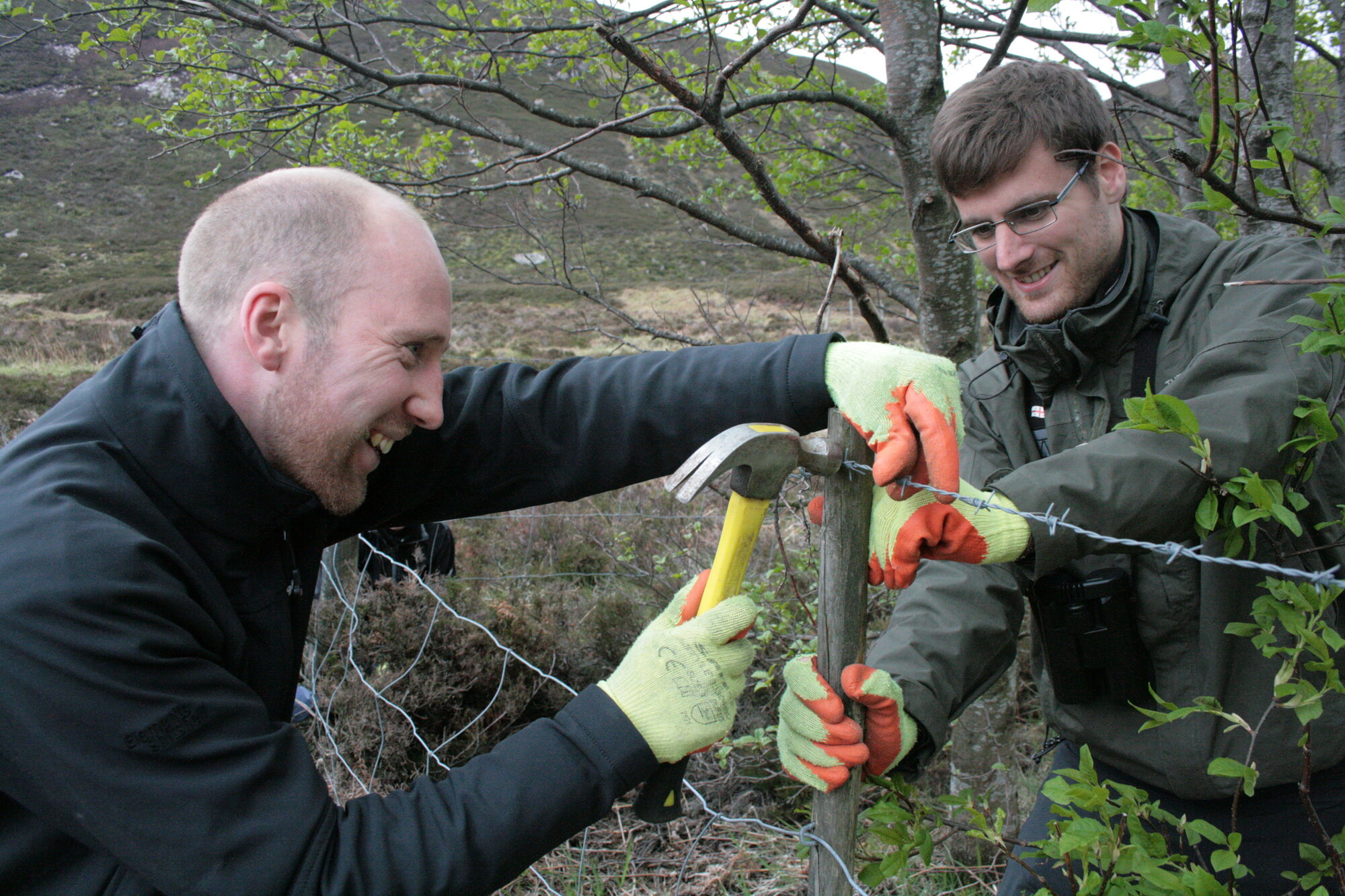Supplementary guidance on the Cairngorms National Park Forestry Strategy - July 2025
Supplementary guidance (2025) to the Cairngorms National Park Forest Strategy 2018
Cairngorms National Park Pàirc Nàiseanta a’ Mhonaidh Ruaidh
Pine forest at the Ryvoan Pass Damian Shields / VisitScotland
Cairngorms National Park Pàirc Nàiseanta a’ Mhonaidh Ruaidh
Page 2 of 5
Supplementary guidance (2025) to the Cairngorms National Park Forest Strategy (2018)
Scottish Forestry and Cairngorms National Park Authority, July 2025
Background
The Forest Strategy (2018) is the key document providing strategic direction on future forest management and restoration of woodlands in the National Park.
Since the Forest Strategy was published in 2018, a new National Park Partnership Plan (2022−27) has been published, national land use policy has evolved, and some common issues and learning have emerged.
The Cairngorms National Park Forest Strategy is not being updated, but this supplementary guidance to the strategy has been produced to update policy guidance in light of these changes, and to aid the development and assessment of forestry applications.
Where you wish to deviate from the preferred approach, as set out in the Forest Strategy or in this supplementary guidance, then we expect to discuss the justification and evidence base with you.
The following section and paragraph numbers match those in the Forest Strategy document and allow for direct reference to where this supplementary guidance fits in.
4.1 Woodland creation
a) Forest habitat networks – natural regeneration
Whilst recognising the need for planting, the National Park Partnership Plan aims to increase areas of natural regeneration. Expansion by regeneration rather than new planting is the favoured approach within 50m of seed sources of native species, including the Caledonian pinewood inventory sites.
Cairngorms National Park Pàirc Nàiseanta a’ Mhonaidh Ruaidh
Page 3 of 5
Scottish Forestry will encourage more regeneration by extending this 50m buffer where there are indications of likely regeneration and will not generally approve such areas for planting unless regeneration fails to establish following protection and herbivore management. However, where seed sources are limited, a mix of planting and regeneration will be supported.
c) Integration with agricultural land
In the context of assessing suitability of land for tree planting, in-bye agricultural land is defined as any land which is or has been enclosed or delineated by fences, dykes, hedges etc (including apportioned land) and which has been used for cultivation, production of forage or closely controlled grazing by stock.
Also, when designing new woodlands please take account of the historic character and cultural values of the landscape including historic, or currently disused, croft land.
d) Integration with peatlands
Whilst there is no planting on peat >50cm deep, there is also a need for applications for planting to avoid compromising the hydrology of adjacent bog and wetland habitats, and to ensure integration of woodland expansion with peatlands. Specific attention will be paid where deeper peat (50cm or deeper) grades through into shallower peat (30 – 50cm deep).
Applicants should refer to the searchable ‘Carbon and Peatland 2016’ layer on the ‘Scotland’s Environment Web Map’ internet page for information on likely presence of peat.
For ground preparation – to minimise soil disturbance, carbon loss, visual impacts and maintain access – screefing (or where cultivation is proposed inverted mounding) will be the preferred method.
e) Deer management
Fencing is an important tool for woodland creation; however, fencing – including for restocking – is particularly sensitive in Strathspey and Deeside, and the
Cairngorms National Park Pàirc Nàiseanta a’ Mhonaidh Ruaidh
Page 4 of 5
Capercaillie Emergency Plan emphasises the need for fence removal.
To achieve the direction of the National Park Partnership Plan – minimising the use of deer fencing and encouraging establishment through herbivore management – applicants should prepare deer management plans when developing woodland creation proposals. These plans should draw on local knowledge, consider if the proposal can be achieved without deer fencing and set out the protection strategy and justification.
The Park Authority will indicate areas of the National Park with low deer densities and provide advice on the preparation of deer management plans. Scottish Forestry will seek deer management plans on most applications.
f) Deer fencing
As part of the consultation process, Scottish Forestry will seek advice from the Park Authority and NatureScot on these deer management plans and the necessity for any fencing. Where deer fencing is approved, Scottish Forestry will condition the removal of the fence as soon as it has served its purpose and the trees are established.
i) Wildfire
There is an increasing risk of wildfire across the National Park and to its forests and woodlands. As part of larger forest plans and woodland creation applications, Scottish Forestry will ask applicants to discuss and identify measures to counter the risks posed by wildfires. The Cairngorms National Park Integrated Wildfire Management Plan also provides a useful reference and guidance information.
4.3 Rural development
b) Productive woodland
For restocking, the policy guidance encourages increasing structural and species diversity, and the special role of Scots pine. On less sensitive sites where non- native species are felled, replanting with non-natives to produce timber can deliver value. This sensitivity will be informed by the strategic need for native
Cairngorms National Park Pàirc Nàiseanta a’ Mhonaidh Ruaidh
Page 5 of 5
woodland connectivity and nature networks requirements within the National Park.
4.4 Forests and people
a) Consultation / community
In line with Scottish Land Commission and Confor guidance, there is a requirement to engage and consult communities when preparing forestry proposals. At this stage, applicants will be encouraged to actively discuss their scheme with local communities and, where appropriate, look to integrate any ideas that arise for community benefit into their proposals.




